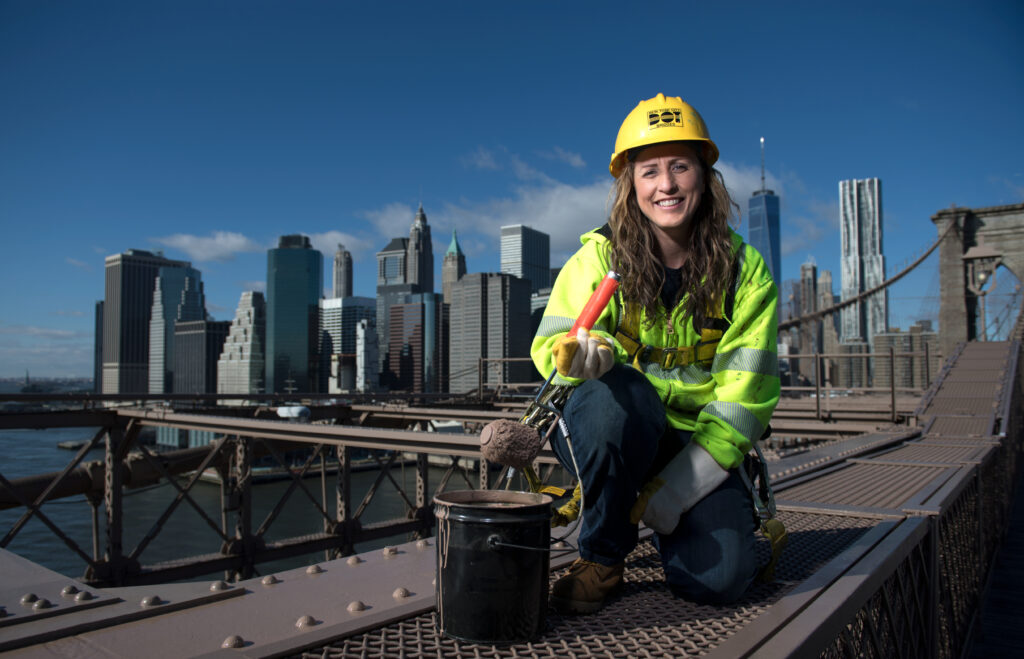The United States is teetering on a cliff edge.
Systemic racism has gone unchecked for centuries. The wealth gap is widening and communities of color are as chronically under-resourced as ever. Climate breakdown is hitting many of these same communities first and worst. Crises like the Great Recession and coronavirus pandemic have exposed how our economy simply isn’t set up to work for working people—even as corporations and CEOs get richer.
To fix these interlocking problems, we need to first understand how we got here. And the erosion of the industrial worker movement is one critical, yet often overlooked, part of the story.
How did we get here?
Over the past half century, factories, which had been the foundation of the new middle class in the postwar period, began shutting down and moving to low wage communities, leaving unemployment and poverty in their wake. By the 1990s, manufacturing supply chains in the U.S. became so globalized that pundits across the world proclaimed U.S. industrial worker power as “dying” or “dead.”
As manufacturing jobs became more precarious and underpaid, immigrant and Black workers from Mississippi to California began organizing for a voice on the job—only to face repression and threats that factories would shutter and move elsewhere. As a result, wages and working conditions in the U.S. manufacturing sector slid dramatically. Once a source of stable, family-sustaining careers with low educational barriers to entry, the U.S. manufacturing sector has become the largest user of temporary labor in the country, with 36% of all temporary workers employed in production and industrial jobs with no workplace protection.
What does rebuilding industrial worker power have to do with building a fair economy and healthier communities?
A lot.
Right now, approximately 20% of all manufactured goods in the U.S. are purchased by our governments and public agencies. Every year, federal, state, and local governments spend nearly $2 trillion of our public dollars to purchase manufactured equipment—everything from school buses to trains and garbage trucks. This is public purchasing, and it fuels a vast portion of our economy.
Despite the fact that our public dollars fuel much of the manufacturing sector through public purchasing and subsidies, there usually isn’t anything in public contracts to hold companies—many of them global manufacturers—accountable to creating good jobs or making long-term investments in our communities. Over the years, strict new laws have made it nearly impossible for local governments to harness their purchasing power to lift labor standards or create high-road jobs.
It doesn’t have to be this way.
For too long, people have suffered low wages and unfair treatment working for manufacturers and corporations that make big profits spending the public’s money. It’s time to rethink the status quo on public purchasing.
Imagine if every one of the public dollars that went toward funding these subsidies and contracts with manufacturers contributed to creating good jobs and rebuilding industrial worker power. Imagine if our public dollars also tackled racial and socio-economic injustices, countered climate change, and strengthened communities.
That vision is what keeps us moving at Jobs to Move America. It’s what it would look like if our public goods did the most public good.
Our “public goods for the most public good” policy framework empowers cities, states, and public agencies to use our public dollars to create good jobs and advance racial, gender, and climate equity across the country. On the ground, our community and worker coalitions organize for greater voice on the shop floor.

Research shows that the $2 trillion we spend on public purchasing each year could create up to 20 million good jobs if cities and states embraced our model of “public goods for the most public good.”
We’ve created policy tools that make sure communities and workers reap real benefits from the billions of public dollars we invest in infrastructure. We’ve played a pivotal role in getting rail and bus companies to build factories and create thousands of good, family-sustaining jobs in California, Illinois, and Massachusetts. We’re working with climate justice groups to make sure our transition to clean energy creates good jobs for workers and marginalized communities. We’re advancing a new paradigm on federal infrastructure policy.
To tackle the biggest issues of our time, we need to create a fair economy with good jobs and healthier communities for all. Getting there means rebuilding worker and community power.
